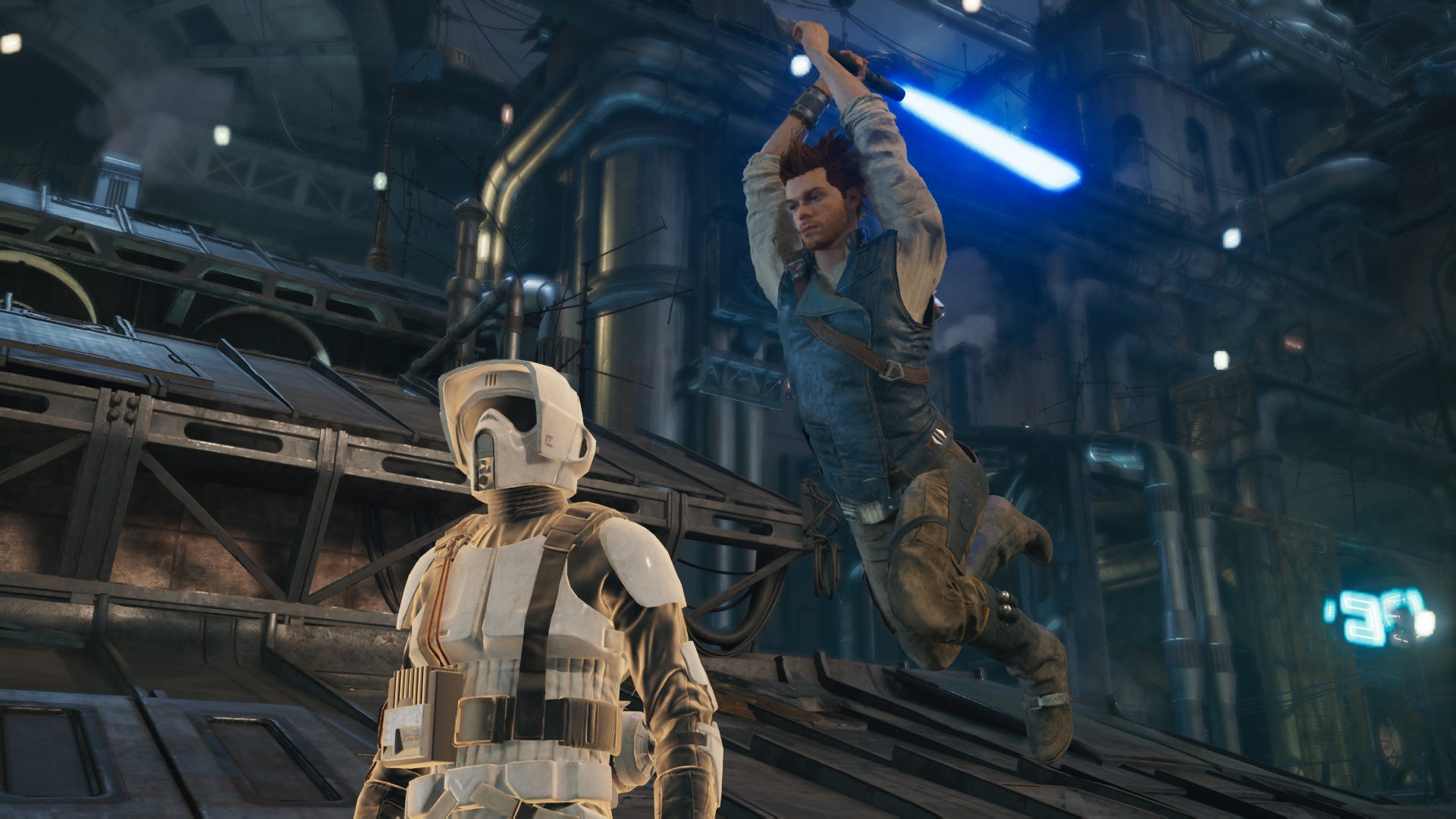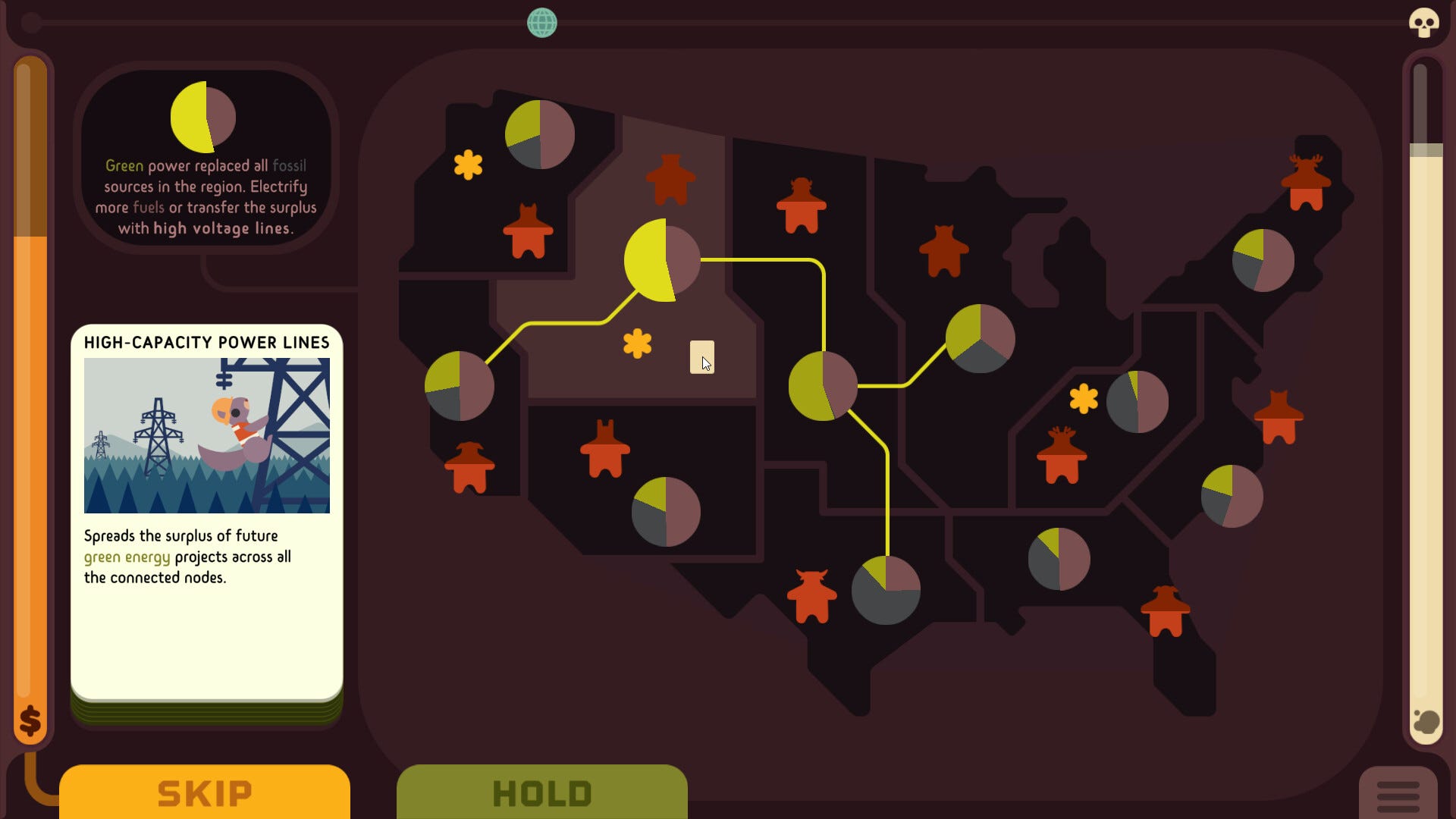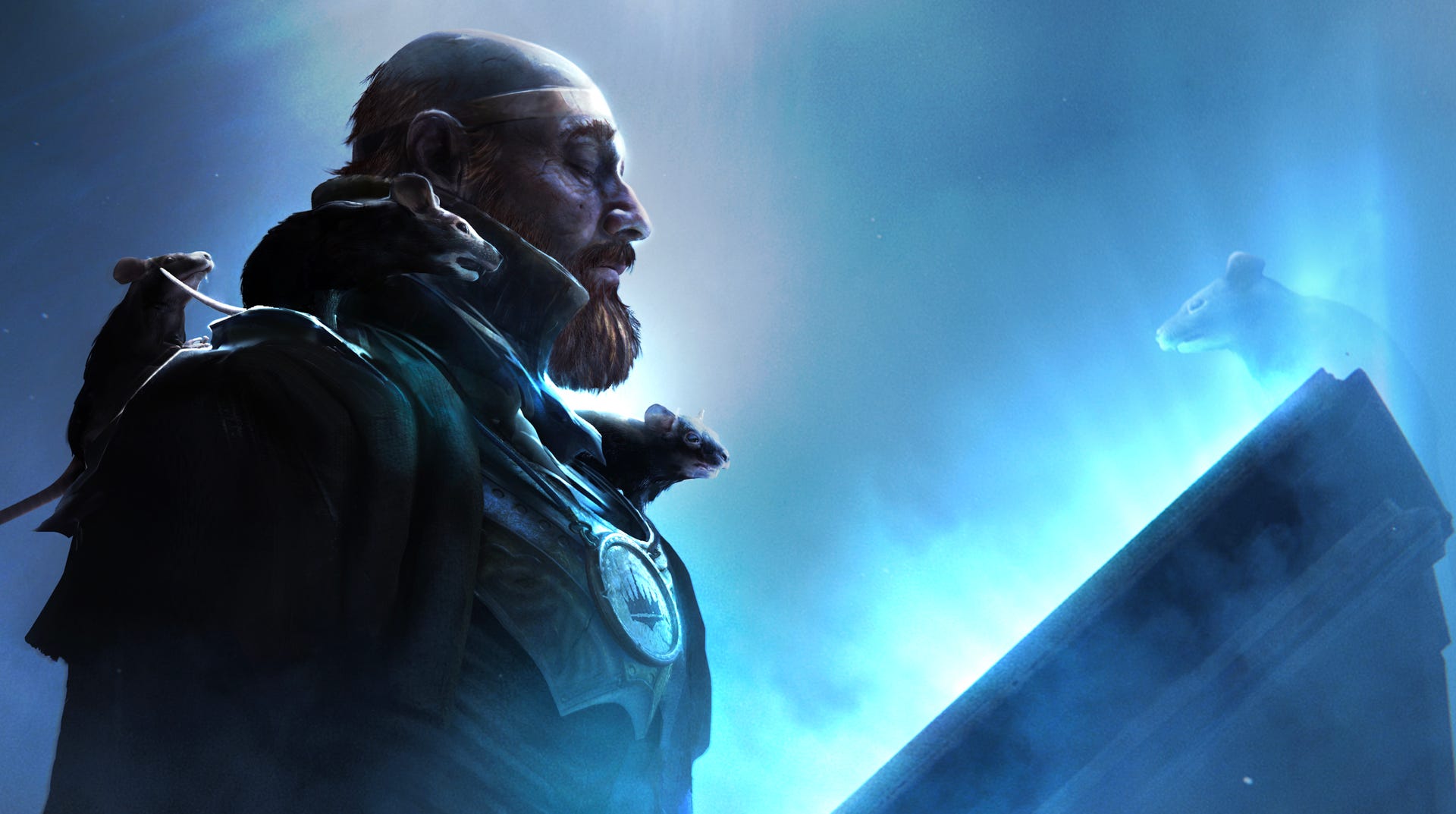After about 20 hours of guiding hundreds of thousands of these weird little dudes through more imaginative puzzles than I can count, I’m left with childlike joy and at least a little bit more confidence in my problem-solving skills than I had when I started playing Humanity. Each of its maps is simple enough to be solved in about 10 to 20 minutes, yet they never stop toying with elements of platformers, dipping into real-time strategy, stealth-action, and even arcade shooting at times. Its puzzling possibilities are as limitless as its endless swarms of human minions, and thanks to its extensive yet effortlessly simple Stage Creator, it verges on Little Big Planet levels of open-endedness that will inevitably keep me coming back for months, if not years.
Let’s back up just a second and explain exactly what Humanity is. It’s a puzzle game from the minds behind Tetris Effect and Rez at Enhance Games, which explains why it’s so bizarre and cool looking. You play as a ghostly Shiba Inu with the power to make humans do your bidding, and the goal is basically to guide your followers through each map, usually doing stuff like manipulating time and physics to clear a suitable path. No, the thin story doesn’t make any sense – it’s not a big focus, just like in Rez. But Humanity does loosely point to some interesting metaphors about human nature, and this somehow works to explain some of its wildest moments. …Don’t ask about that one. You kinda have to play it for yourself to make the pieces fit.
It’s really like a modernized take on Lemmings, but if you’ve played Ratchet & Clank: Rift Apart, you might remember a few sequences where you run around as Clank guiding infinite clones of yourself. That’s basically what you’re doing in Humanity, but it’s way more flexible, with far more tools at your disposal to change the fate of my endless stream of human followers.
That means running and jumping around the map yourself, placing commands like Turn, Jump, Shoot, and so forth. I had heaps of fun watching my initial strategies and mechanisms fail until I miraculously figured things out each time I progressed to the next level, because trial and error is fun when messing up is this entertaining. It’s great that you can restart a map at any time without resetting your existing commands – that lets me rethink my steps at an iterative level without throwing all of my progress away after each mistake.
There’s a good bit of action too, in that sometimes you need to run around a map like a manic puppy and change the commands you’ve already placed as certain conditions are met; for example, in one level, I organized a group of humans to push a block into place while another group pushed a separate block, working together to create a pathway so that both groups could jump across to escape an encroaching swarm of enemies. That’s just one example, but it illustrates the basic premise of Humanity and how each of its intermingling systems gives way to a seemingly limitless number of challenges.
Playing as a Shiba Inu works remarkably well here, especially given that your small stature and quick movement grant you the ability to slyly weave between groups of humans, dashing and leaping and even using your own minions to catapult yourself through the crowds. This all feels great in action, and with the DualSense controller thumping and pulsating in my hands, it all came together beautifully.
It’s wild to see potentially thousands of individual people flying across my television or inside my VR headset at once, and many of Humanity’s individual scenes are jaw-dropping. That’s both due to the bewildering technical wizardry of managing this crowd and the way that it uses strikingly imaginative scenes to burn each moment of satisfaction into my brain. One early puzzle had me creating my own state machine, a logical mechanism made up of thousands of individual humans jumping around between four platforms in an infinite loop, stepping over pressure plates. That allowed me to send a separate group climbing up a ledge and jumping their way to safety.
You’d think that so many moving bodies running around on-screen at once would get confusing or even nauseating, but Humanity’s camera system is handled so well both in and out of VR that you almost always have control of what you’re viewing. When you need to zoom in for a closer look or zoom out to get a bigger picture, it’s smooth and simple to adjust your view to focus where you need to.
Sometimes these infinite loops keep going even after you’ve hit the victory screen, allowing you to revel at the literal gravity of your own problem-solving abilities. Again, that’s just one potential example of how these mechanics interlock to create interesting challenges, and frankly it was one of the simpler ones I ran into. Humanity’s open-endedness means it almost never slows down or grows repetitive, and figuring out each of its many clever puzzles feels like a completely new experience that is uniquely satisfying each time. That’s especially true given how challenging they can be if you don’t look at the conveniently included Solution Videos that help you with basic solutions but never go overboard or spoil any secrets, like how to unlock the optional objectives on any given map.
Those secret objectives are the backbone of Humanity’s progression system, and you need to unlock a certain number of them in each act to progress. You can’t just do the bare minimum of getting your humans from point A to point B and expect a pat on the head; this game demands a little more thought from you. But it was never a drag since they were never overly tricky to find or unlock, usually just adding extra layers of satisfactory challenge while giving more experience points along the way. Just knowing that the way I solved a level isn’t necessarily the only way adds a ton of replayability.
There’s a nifty progression system that levels you up as you complete side objectives, and it unlocks timely rewards like new cosmetics for your human minions and even new gameplay features such as the ability to speed up time – or visit a hidden stats page from the menu that tells you exactly how many humans have spawned across your entire journey. The best part of all that is you can use those same rewards when you eventually start creating your own puzzles and maps – which you can share with the world at the press of a button.
If you play enough custom maps or get your own levels upvoted enough in the User Stages mode, you’ll gain XP in a set of totally separate progression systems that feel complementary but not at all necessary. You’ll gradually unlock cooler avatars for social clout, but these systems wisely avoid affecting gameplay. In any case, the User Stages mode is already filled with interesting levels that stretch Humanity’s toolbox of mechanics well past the limits of what Enhance must’ve thought most people would be comfortable with in the main campaign, and it’s easy to navigate directly to the best player-created levels through a handy indexing system. I could easily spend hours here, and I might have possibly even sidestepped the campaign altogether if I’d discovered the User Stages mode first, but I’m glad I played it as a tutorial for the super-advanced levels people are out there creating.
And this is all made better by Humanity’s VR compatibility, which will work with either PlayStation VR headset or PC VR. It’s a perfectly viable way to play any level, though the VR Mode disappointingly hasn’t been tooled to work with the Stage Creator tool itself quite yet. Still, I’m delighted that Humanity gives you the option to enter a full-blown VR Mode from the main menu, placing you directly into the action – or you can stick to the PS VR2’s Theater Mode and lay back on the couch and play on a virtual flat screen. Both modes play comfortably with the DualSense controller, though I wasn’t quite as impressed when I tried it with the PS VR2’s Sense controllers. They didn’t feel like a natural fit, given that you’re controlling a little dog with your thumbstick rather than doing anything with motion controls. Granted, that’s a small issue when compared to the fact that I ran into almost no notable bugs minus one stray crash that happened in VR later on in my playthrough.
Humanity also includes a brilliant vocal synth-driven score with some piano and other synthetic elements layered in that could only be described as a vibe. Its melodies are simple, repetitive, and sometimes even a bit silly, but each tune is appropriately relaxing, setting a gentle rhythm to brainstorm puzzles to. Even the relatively energetic bits of the soundtrack, namely during its boss fights, have a steady drone to them that make them sit comfortably in the background.















